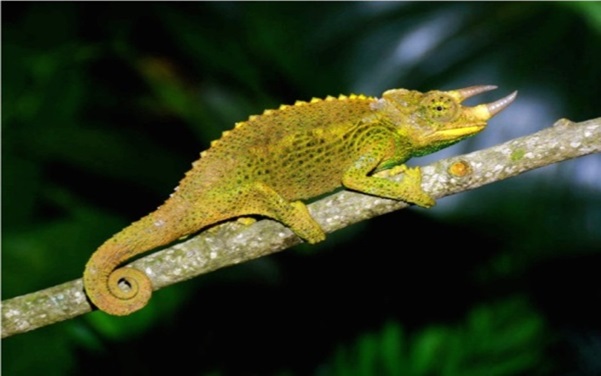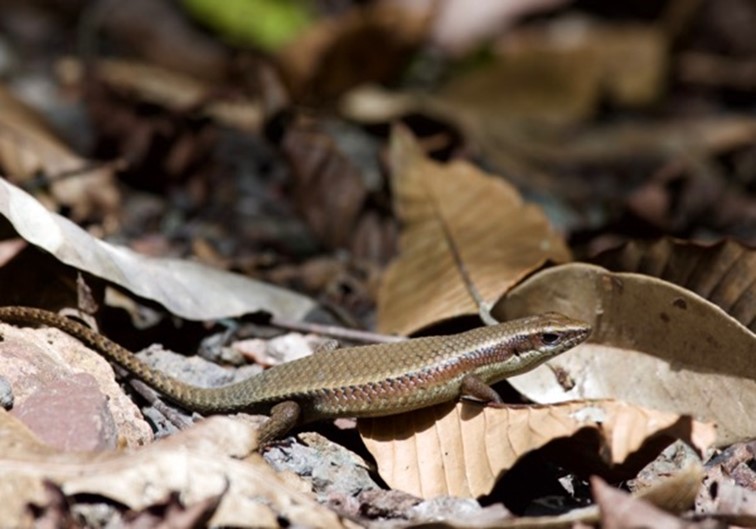Chameleons belong to family Chamaeleonidae,
Chameleons are a group of primarily lizards adapted to living on trees i.e. they are arboreal (tree-dwelling) They have opposable toes and a prehensile tail, ideal for holding onto branches. Chameleons are well known for their ability to change colour to match their surroundings, using special skin cells. These colours range from bright green to dark brown. This ability to change pattern and colour, their only defence, can be triggered by mood, light and temperature, and can help to communicate with other
chameleons during territorial disputes and mating. They have stereoscopic vision, with the eyes locking and homing in with deadly accuracy on an insect prey. Their eyes can also move independently of one another; one eye may look up while the other looks down.
Jackson’s three-horned chameleon
(Chamaeleo jacksoni)

Jackson’s three-horned chameleon called Three-horned chameleons because the male has three distinct, forward-pointing horns on its head, which are either absent or poorly developed in the female. The coloring is usually bright green, with some individual animals having traces of blue and yellow, but like all chameleons, they change color quickly depending on the mood, health, and temperature. They use the ability to change their skin color as camouflage to hide from predators. However, if they are spotted by a predator, chameleons become completely defenseless.
This chameleon may be seen in the Arboretum, and only occurs naturally in Kenya and Tanzania. Although rather fearsome looking, it is quite harmless to people! They need cover to hide and prefer to live in trees and thickets. They can also be found in plantations and gardens. Jackson’s chameleons are solitary creatures, mostly active during the day and spend their time hunting and basking in the sun. When hunting chameleons use their sharp vision to locate the prey and when the prey is located they slowly approach it without being detected due to their ability to change the color and blend with the surroundings. Once chameleons get close enough to the prey they use their long tongue to grab it in a split second. Their tongue can be almost 2 times the body length and the muscles in their mouth allow chameleons to move their tongue at great speeds
High-casqued chameleon
(Chamaeleo hoehneli),

This is also common Nairobi Arboretum. It is a small to medium-size chameleon, growing up to 10 inches in total length (including tail). The males are larger than females, with a larger casque, horn, a fringe of spikes from its jaw to its throat and enlarged tail base. It has a highly variable coloration, which can range from almost completely black during morning hours when basking in the sunlight to capture heat energy. It is a very slow-moving chameleon, and may be seen where insects are plentiful. Its catches the prey by extending its sticky telescopic tongue in a flash to immobilise an insect. This extraordinary tongue is longer than the chameleon’s body lengt
Skinks

Another group of lizards that may be seen in the Arboretum is the skink family. Skinks are found worldwide and have the ability to lose their tails to escape attacks by predators; the tail then grows back. Skinks have cylindrical bodies covered with smooth scales, no distinct neck, and a sharply pointed nose. Most have legs and stripey bodies.
The Striped skink (Mabuya striata) is quite common, being dark brown with a creamy line down each side. It is found in open country, often basking in the sun on a rock or a wall, waiting for unsuspecting insects, its main food